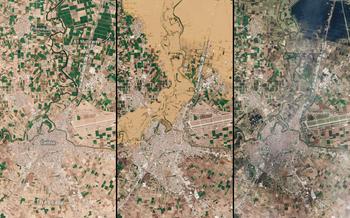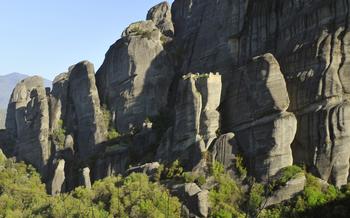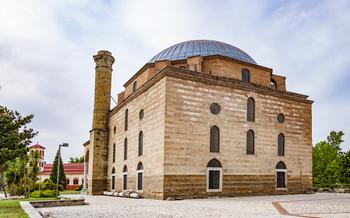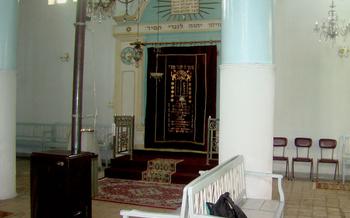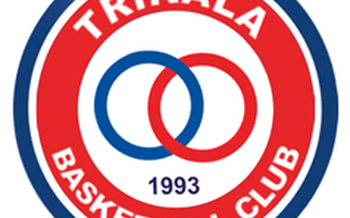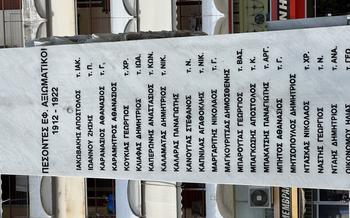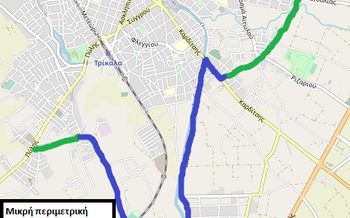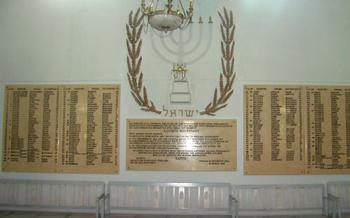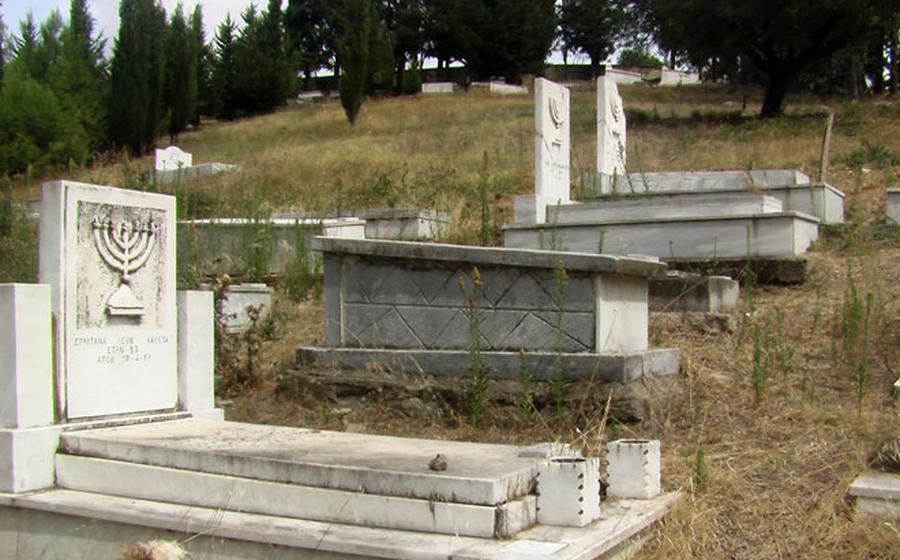
Saint Nicholas Church Meteora Viewpoint
- St. Nicholas Church: A Spiritual and Architectural Gem
- The Meteora Viewpoint: Unveiling Panoramic Splendor
- Exploring Meteora
- Pilgrimage and Spirituality
- Local Cuisine: A Culinary Journey through Trikala and Meteora
- Accommodation Options
- Transportation and Getting There:
- Hiking and Nature Trails
- Packing Essentials
- Theological and Historical Context:
- Photography and Capture the Beauty
- Local Crafts and Handicrafts
- Visiting Monasteries: A Guide to Etiquette and Respect
- Sustainable Tourism
- Insider Tip: Unveiling Meteora's Hidden Treasures
St. Nicholas Church: A Spiritual and Architectural Gem
Overlooking the enchanting Meteora landscape, St. Nicholas Church holds a profound significance for both its religious and historical value. This 16th-century Byzantine church is a testament to the rich heritage of the region, attracting pilgrims and art enthusiasts alike. Step into the sanctuary and be awestruck by the intricate artwork adorning its walls, depicting biblical scenes and the lives of saints. Each icon tells a story, inviting visitors to delve into the depths of Orthodox Christianity. During the annual feast day of St. Nicholas, the church transforms into a vibrant hub of celebration, where locals gather to honor the patron saint with traditional dances, music, and feasts.
The Meteora Viewpoint: Unveiling Panoramic Splendor
Perched atop a rocky promontory in Trikala, Greece, the Meteora Viewpoint beckons travelers with its breathtaking panoramas of the iconic Meteora monasteries. This unique vantage point offers an unparalleled perspective of the towering rock formations and the serene landscapes that surround them. As you stand at the viewpoint, you will be awestruck by the sheer scale and majesty of these architectural wonders.
The viewpoint is strategically positioned, providing visitors with a sweeping vista of the entire Meteora region. From here, you can admire the monasteries nestled atop their rocky pillars, seemingly suspended between heaven and earth. The panoramic views encompass the surrounding valleys, forests, and villages, creating a tapestry of natural beauty that will leave you spellbound.
This idyllic spot is not only a haven for photography enthusiasts but also a sanctuary for those seeking a moment of tranquility. As the sun begins its descent, the sky transforms into a canvas of vibrant colors, casting a golden glow upon the monasteries and the surrounding landscape. It is a magical moment that will forever etch itself into your memory.
Whether you're a nature lover, a history buff, or simply seeking a breathtaking experience, the Meteora Viewpoint is a must-visit destination. Immerse yourself in the stunning scenery, capture the essence of Meteora through your lens, and let the tranquility of the surroundings soothe your soul.
Exploring Meteora
Meteora, a complex of monasteries perched atop towering rock formations, is a UNESCO World Heritage Site and a marvel of architecture. These monasteries, built in the 14th century, were once home to hundreds of monks and served as a refuge during times of war. Today, they stand as a testament to the ingenuity and faith of those who built them.
Each monastery is unique in its design and construction, showcasing intricate frescoes and iconography that depict scenes from the Bible and the lives of the saints. Visitors can explore the monasteries, marveling at the stunning views of the surrounding landscape, which includes the Pindus Mountains and the Thessalian Plain.
For those seeking adventure, Meteora offers a variety of hiking trails that lead to breathtaking viewpoints and hidden gems. The trails range from easy walks to challenging climbs, providing opportunities for all levels of hikers to experience the natural beauty of the region. Rock climbing enthusiasts will find Meteora to be a paradise, with numerous cliffs and rock faces to challenge their skills.
Pilgrimage and Spirituality
Meteora holds deep spiritual significance, attracting pilgrims and spirituality seekers from around the world. The monasteries, perched atop towering rock formations, have a profound impact on visitors, creating a sense of awe and wonder. The monastic traditions and the presence of Orthodox monks further enhance the sacred atmosphere of Meteora. Many visitors seek inner peace and reflection amidst the serene surroundings, finding solace and inspiration in the monasteries' tranquil ambiance. The monasteries offer opportunities for spiritual contemplation and connection with the divine, making Meteora a pilgrimage site of great importance.
Local Cuisine: A Culinary Journey through Trikala and Meteora
Indulge in a culinary adventure as you explore the flavors of Trikala and Meteora. Begin your journey with Trikala sausages, renowned for their smoky taste and juicy texture. Savor Meteora cheese, a local delicacy handcrafted by monks using traditional methods, resulting in a rich and nutty flavor. Delight in the simplicity of homemade pies, filled with local vegetables, herbs, and cheese, embodying the essence of Greek cuisine.
Embark on a culinary tour or immerse yourself in a hands-on cooking workshop, learning the secrets of traditional Greek dishes from local experts. Discover the art of preparing spanakopita, moussaka, and pastitsio, each bursting with fresh ingredients and aromatic spices.
Venture into local restaurants and tavernas, where the warmth of Greek hospitality blends seamlessly with the tantalizing aromas of sizzling grills and freshly baked bread. Sample regional specialties like kokoretsi, a skewer of grilled lamb intestines, or kreatopita, a savory meat pie that will leave you craving for more.
As you savor the delectable flavors of Trikala and Meteora, you'll find yourself immersed in a culinary experience that celebrates the region's rich cultural heritage and passion for authentic Greek cuisine.
Accommodation Options
Trikala and Meteora offer a range of accommodation options to suit different budgets and preferences. From comfortable hotels to charming guesthouses and even unique stays at monasteries, there's something for every traveler.
For those seeking an authentic experience, consider staying at one of the monasteries. Several monasteries offer overnight accommodations, allowing visitors to immerse themselves in the monastic lifestyle and witness the daily rituals of the monks. These stays provide a rare opportunity to connect with the spiritual side of Meteora and gain insights into the Orthodox Christian traditions.
For a more traditional hotel experience, Trikala offers a range of options, from budget-friendly hotels to luxurious accommodations with stunning views of the Meteora monasteries. Many hotels are conveniently located within walking distance of the town's main attractions, making it easy to explore the city on foot.
Budget travelers will find a selection of guesthouses and hostels offering affordable rates and a friendly atmosphere. These accommodations often provide shared kitchen facilities, allowing guests to save money by preparing their meals.
No matter your budget or preferences, Trikala and Meteora have something to offer every traveler. Whether you're seeking a spiritual retreat, a comfortable stay, or an adventure-filled getaway, you'll find the perfect accommodation to make your visit truly memorable.
Transportation and Getting There:
Reaching Trikala and Meteora is a breeze, with multiple transportation options available. For a scenic journey, hop on a train from Athens or Thessaloniki, enjoying the changing landscapes along the way. Alternatively, buses offer a more budget-friendly option, connecting Trikala to major cities and nearby towns.
If you prefer the freedom of your own vehicle, car rentals are readily available. Embark on a road trip, savoring the flexibility of exploring the region at your own pace. Guided tours and day trips from Athens and Thessaloniki are also popular, providing a hassle-free experience with knowledgeable guides.
Hiking and Nature Trails
Meteora offers a diverse range of hiking trails catering to adventurers of all levels. Whether you're a seasoned hiker seeking a challenging trek or a casual enthusiast looking for a leisurely stroll, there's a trail waiting for you.
For awe-inspiring views of the monasteries, embark on the Grand Meteora Trail. This well-marked path winds through the heart of the Meteora Valley, leading you past iconic monasteries perched atop towering rock pillars.
If you prefer a more leisurely experience, the Kastraki Trail is a great option. This scenic route takes you through the picturesque village of Kastraki, offering panoramic vistas of the surrounding landscape.
Remember, safety comes first when hiking in Meteora. Wear appropriate footwear, bring sufficient water, and be mindful of the weather conditions. Respect the environment by leaving no trace and staying on designated trails.
Packing Essentials
To make your hiking experience in Meteora truly enjoyable, pack the following essentials:
- Comfortable hiking shoes or boots: Good traction is crucial for navigating rocky terrain.
- Layers of clothing: Temperatures can fluctuate, so dress in layers to adjust accordingly.
- Sunscreen, hat, and sunglasses: Protect yourself from the sun's harmful rays.
- Water bottle: Stay hydrated, especially during warm weather.
- Camera: Capture the breathtaking scenery and memories.
- Snacks: Refuel with energy-boosting snacks along the way.
- First-aid kit: Be prepared for minor injuries or blisters.
- Map or GPS device: Navigate confidently with a detailed map or use a GPS device for real-time tracking.
Theological and Historical Context:
Meteora's monasteries hold deep theological and historical significance, embodying the essence of Orthodox Christianity and serving as a testament to the region's rich past. Founded on the principles of monasticism, these monasteries have been centers of spiritual contemplation and religious devotion for centuries.
The monasteries were initially established during the Byzantine period, with monks seeking refuge from persecution and a place for solitary contemplation. They embraced the Orthodox Christian tradition, adhering to its teachings and practices, which influenced the monasteries' architecture, artwork, and daily life.
During the Ottoman period, Meteora's monasteries faced challenges and adversity, yet they remained steadfast in their faith and mission. Despite political and religious pressures, the monks preserved their traditions and continued to offer spiritual guidance and support to the local community.
Over the centuries, the monasteries have evolved and adapted, witnessing changes in leadership, architectural styles, and monastic practices. However, their core values and commitment to Orthodox Christianity have remained unwavering, shaping their identity and contributing to their enduring legacy.
The monasteries' theological and historical significance extends beyond their religious function. They serve as repositories of cultural and artistic heritage, housing valuable icons, manuscripts, and frescoes that reflect the Byzantine and post-Byzantine periods. These works of art not only beautify the monasteries but also provide insights into the theological and cultural context of their creation.
Photography and Capture the Beauty
Meteora's stunning landscapes and iconic monasteries present a photographer's paradise. To capture the best shots, arrive early for sunrise or stay late for sunset, when the warm light casts a golden glow on the monasteries and surrounding cliffs. Experiment with different angles and perspectives. Climb to higher viewpoints for panoramic shots or get up close to capture the intricate details of the monasteries' architecture. Use a tripod to stabilize your camera and avoid blurry images, especially in low-light conditions. Pay attention to the composition of your shots, ensuring the monasteries are well-positioned within the frame. Lastly, be mindful of the sanctity of the monasteries and avoid disturbing the monks or other visitors.
Local Crafts and Handicrafts
Meteora's rich cultural heritage extends beyond its monasteries, encompassing a vibrant craft tradition. Local artisans create beautiful handmade items that reflect the region's unique identity. Icon painting, pottery, and weaving are among the most popular crafts, with each piece telling a story of faith, tradition, and artistic skill.
In the village of Kastraki, nestled at the foot of Meteora, you'll find workshops and shops where artisans showcase their creations. Browse intricate hand-painted icons, each depicting a different saint or religious scene. The colors are vibrant, the lines delicate, and the attention to detail is remarkable.
Pottery is another art form that flourishes in Meteora. Artisans use local clay to create a variety of functional and decorative items, from plates and bowls to vases and sculptures. The pottery is often adorned with traditional motifs and patterns, giving each piece a unique charm.
Weaving is another ancient craft that has been passed down through generations in Meteora. Artisans use looms to create colorful rugs, blankets, and tapestries. The designs are often inspired by nature, incorporating motifs such as flowers, leaves, and animals.
Shopping for local crafts and handicrafts is a wonderful way to support the local economy and preserve the cultural heritage of Meteora. You'll find unique souvenirs that will remind you of your visit for years to come.
Visiting Monasteries: A Guide to Etiquette and Respect
When visiting the monasteries of Meteora, it is important to be mindful of the religious and cultural significance of these sacred places. To ensure a respectful and enriching experience, here are some guidelines to follow:
-
Dress Code: Modest attire is expected when entering the monasteries. Shoulders and knees should be covered for both men and women. Avoid wearing shorts, tank tops, or revealing clothing.
-
Monastic Rules: Silence and reverence are maintained within the monasteries. Refrain from loud conversations, laughter, and disruptive behavior. Photography is generally not permitted inside the monasteries, unless specifically allowed by the monks.
-
Visiting Hours: Each monastery has its own visiting hours, which vary depending on the season and the monastery's schedule. Check the official website or inquire locally to confirm the hours before your visit.
-
Guided Tours: Guided tours are available at most monasteries, providing insights into their history, architecture, and religious significance. Consider joining a guided tour to make the most of your visit.
-
Self-Guided Exploration: For those who prefer a more independent experience, self-guided exploration is also possible. Maps and guides are available to help you navigate the monasteries and learn about their unique features.
-
Etiquette: Respect the privacy of the monks and avoid disturbing their daily routines. Refrain from touching or climbing on religious artifacts or icons. If you have any questions or need assistance, approach the monks or staff members politely.
Remember that the monasteries of Meteora are active religious communities, and visitors are expected to be respectful and considerate of the monks and their way of life. By observing these guidelines, you can contribute to preserving the sacred atmosphere of these remarkable places.
Sustainable Tourism
As you explore the wonders of Meteora, it is essential to embrace sustainable tourism practices to protect and preserve this unique destination. Here are some tips for responsible travel:
-
Minimize Environmental Impact: Opt for guided tours that prioritize eco-friendly practices and small group sizes to reduce the impact on the environment. Recycle and properly dispose of waste, and avoid littering to keep the natural beauty of Meteora intact.
-
Support Local Businesses: Choose local restaurants, guesthouses, and tour operators that support the local economy and contribute to the well-being of the community. This helps maintain the cultural heritage and authenticity of the region.
-
Respect Cultural and Religious Traditions: Be mindful of local customs and traditions, especially when visiting monasteries and religious sites. Dress appropriately, observe silence in sacred spaces, and refrain from taking photos where it is prohibited.
Insider Tip: Unveiling Meteora's Hidden Treasures
Beyond the well-trodden paths of Meteora, there lies a world of hidden gems waiting to be discovered. Venture off the beaten track and uncover breathtaking viewpoints that offer a unique perspective of the iconic monasteries. These secret spots provide a serene escape from the crowds, allowing you to fully immerse yourself in the tranquil beauty of Meteora.
For an unforgettable culinary experience, seek out local tavernas tucked away in the charming villages that dot the region. These hidden gems serve up authentic Greek cuisine, prepared with fresh, local ingredients and infused with the warmth of traditional hospitality. Indulge in mouthwatering dishes that capture the essence of Meteora's culinary heritage.
If you're an avid hiker, there are secret trails that lead you to secluded viewpoints and hidden monasteries. These paths offer a unique perspective of Meteora's stunning landscapes, allowing you to explore the region at your own pace and discover its hidden treasures.
Finally, to fully appreciate the spiritual essence of Meteora, visit during the off-peak seasons. The monasteries are less crowded, providing an opportunity for a more intimate and contemplative experience. Immerse yourself in the tranquility of Meteora, far from the hustle and bustle of the tourist crowds.
